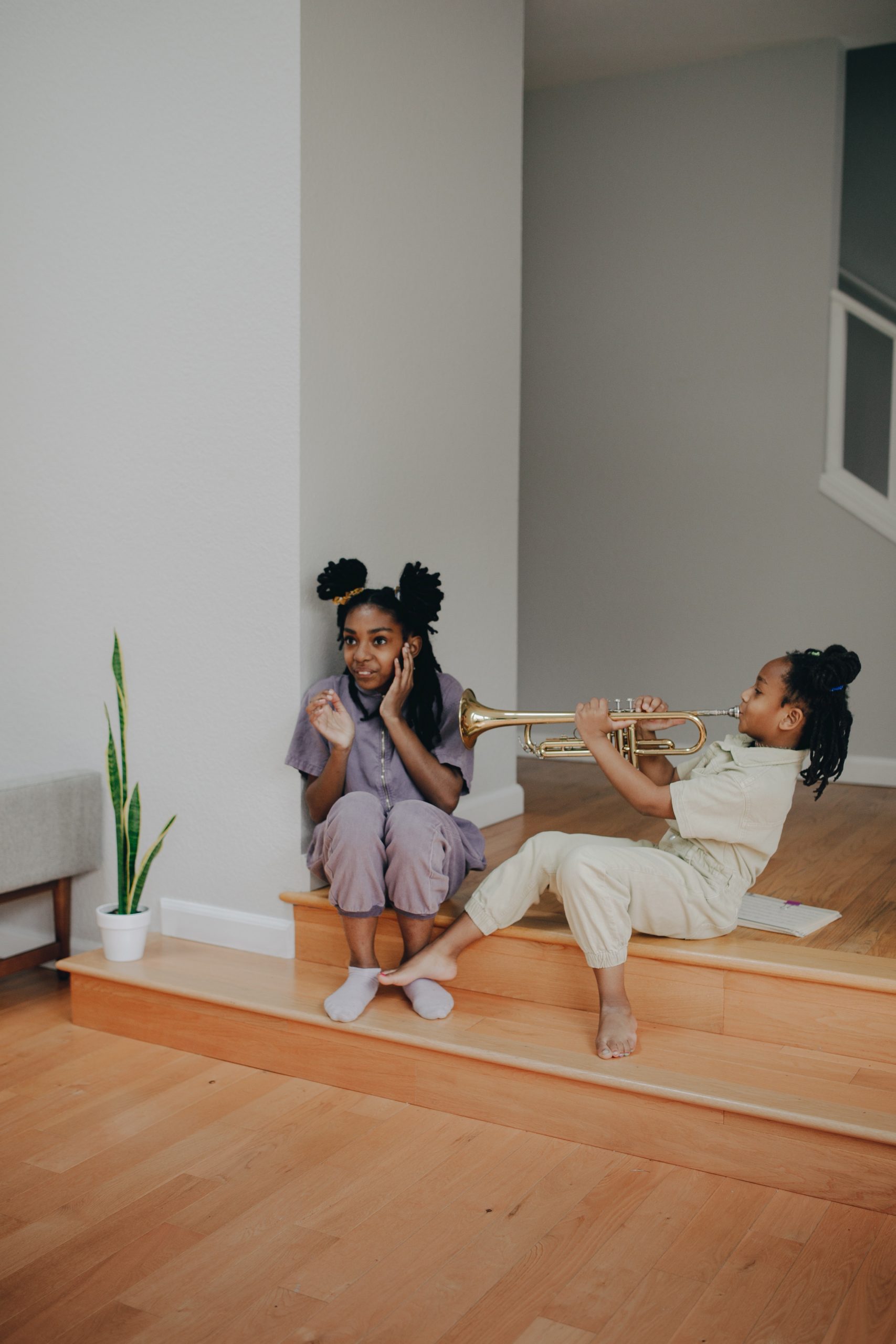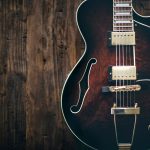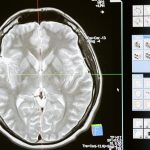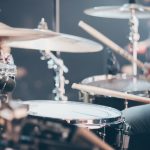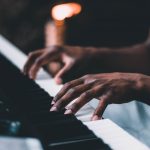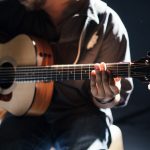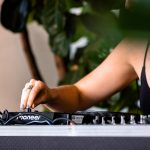In the harmonious world of music, where melodies intertwine and rhythms dance, there exists a fragile yet powerful instrument that often goes unnoticed: the human ear.
Just as a skilled musician cares for their guitar or piano, safeguarding their hearing is equally essential.
The resonant symphonies and electrifying performances that musicians create can be both breath taking and ear-splitting, underscoring the pivotal role that hearing plays in their craft.
However, the very nature of their art exposes them to a unique set of challenges, including the risk of hearing damage.
This guide delves into the critical topic of how musicians protect their hearing, shedding light on the strategies, techniques, and lifestyle choices that enable them to continue creating their masterpieces while preserving their auditory health.
How Do Musicians Protect Their Hearing?
Musicians can safeguard their auditory health with effective strategies. Use custom earplugs or earmuffs to maintain sound quality while reducing volume. Limit exposure to loud sounds with regular breaks and adhere to safe listening levels. Embrace silent practice methods and monitor sound levels using apps for a harmonious balance between passion and protection.
Top 5 Tips – How Musicians Protect Their Hearing
- Use High-Quality Ear Protection
Invest in custom-fit earplugs or over-ear earmuffs designed specifically for musicians. These options provide adequate noise reduction while maintaining sound clarity, ensuring your hearing remains uncompromised during rehearsals and performances.
- Set Safe Listening Levels
Adhere to the “60/60 rule” or similar guidelines: Limit listening to music at 60% volume for a maximum of 60 minutes per session. This helps prevent overexposure to loud sounds and reduces the risk of hearing damage.
- Take Regular Breaks
Incorporate breaks during practice and performances. Give your ears time to rest and recover from loud sounds, reducing the potential for long-term damage. This also applies to the usage of headphones and in-ear monitors.
- Balance Quiet Time and Sound Exposure
Integrate periods of quiet rest into your routine to allow your ears to recover. Consider incorporating silent practice methods or engaging in activities that don’t involve exposure to loud sounds, such as meditation or reading.
- Monitor Sound Levels with Apps
Utilize smartphone apps designed to measure and monitor sound levels in your environment. This helps you stay informed about potentially harmful noise levels and empowers you to make informed decisions about your exposure.
Remember, protecting your hearing isn’t just about safeguarding your auditory health—it’s about ensuring you can continue to create, perform, and enjoy music for years to come.
Understanding Hearing Health
How the Ear Works
The auditory system is a marvel of intricate design, allowing us to perceive the beauty of sound.
The ear comprises three main parts: the outer ear, the middle ear, and the inner ear.
Sound waves first enter the outer ear, where they travel through the ear canal and strike the eardrum, causing it to vibrate.
These vibrations are then transmitted through the middle ear’s tiny bones, known as the ossicles, which amplify the sound.
Finally, the vibrations reach the cochlea in the inner ear, a spiral-shaped organ filled with fluid and sensory hair cells.
These hair cells convert the vibrations into electrical signals that are sent to the brain via the auditory nerve, enabling us to perceive sound.
Common Causes of Hearing Loss
Musicians, passionate about their craft, often face heightened risks of hearing damage due to the very tools they wield—their instruments and the environments in which they perform.
Prolonged exposure to loud music, whether onstage or during rehearsals, can lead to a range of hearing issues.
Noise-induced hearing loss (NIHL) is a prevalent concern, arising from continuous exposure to high-volume levels.
Additionally, musicians who use headphones or in-ear monitors at excessive volumes can also experience hearing deterioration over time.
Differentiating Between Temporary and Permanent Damage
Recognizing the signs of hearing damage is paramount for musicians to take proactive measures.
Temporary threshold shifts (TTS) are instances where hearing seems muffled or dulled after exposure to loud music.
TTS often resolves with time away from the noise, indicating a temporary impairment. However, repeated TTS occurrences can accumulate into permanent damage.
On the other hand, permanent threshold shifts (PTS) result from prolonged exposure to loud sounds, leading to irreversible damage to the delicate hair cells in the cochlea.
Musicians must learn to distinguish between these two types of damage and take immediate steps to prevent further harm.
Risks Faced by Musicians
High Volume Levels during Practice and Performances
Musicians often find themselves immersed in environments where sound levels can reach breath-taking heights.
From electric guitar amplifiers to energetic drumming sessions, the decibel levels generated during practices and performances can easily exceed safe thresholds.
Prolonged exposure to these high volumes can result in immediate discomfort and long-term damage to hearing.
Many musicians, driven by their passion, might not realize the gradual toll this exposure takes on their auditory health.
Prolonged Exposure to Loud Music
The allure of a live concert or a dynamic jam session can lead musicians to disregard the potential risks associated with prolonged exposure to loud music.
Over time, the cumulative effects of these experiences can lead to permanent hearing damage. A single instance of extremely loud sound, like a cymbal crash or a feedback squeal, can also cause sudden hearing trauma.
It’s imperative for musicians to recognize the danger inherent in these situations and take steps to mitigate the risk.
Use of Headphones and In-Ear Monitors
Modern technology has revolutionized the way musicians practice and perform, with headphones and in-ear monitors offering a personalized and immersive experience.
However, these tools, when used without caution, can pose significant threats to hearing health.
Musicians might crank up the volume on their headphones to drown out ambient noise, not realizing they are subjecting their ears to potentially damaging levels of sound.
Additionally, in-ear monitors, if not properly fitted or calibrated, can deliver excessive volume directly into the ear canal, compounding the risk of hearing damage.
To safeguard their auditory health, musicians must be acutely aware of these risks and the potential consequences they pose to their long-term ability to create and enjoy music.
By adopting preventative measures and adjusting their practices, musicians can continue to share their melodies with the world without compromising their most valuable instrument—their hearing.
Strategies: Hearing Protection for Musicians
Choosing the Right Ear Protection
- Earplugs: Custom vs. Disposable:
Musicians have a range of earplug options, each catering to different needs. Custom-moulded earplugs offer a personalized fit that maintains sound quality while reducing volume. These can be obtained through audiologists and moulded to the unique shape of the wearer’s ears. Disposable foam or silicone earplugs are more affordable and easily accessible, though they can attenuate sound quality more than custom options. Musicians like Chris Martin of Coldplay have been vocal about their use of custom earplugs to ensure clear sound and protection during performances
- Over-Ear Earmuffs:
Over-ear earmuffs provide robust protection for musicians exposed to loud environments. These earmuffs can be worn over headphones to double up on hearing protection. Artists like Trent Reznor of Nine Inch Nails have embraced this approach to protect their hearing during rehearsals and performances
Establishing Safe Listening Levels
Musicians should adhere to recommended safe listening levels to prevent immediate and long-term damage.
The “60/60 rule” is a popular guideline: listening at 60% volume for a maximum of 60 minutes.
This helps reduce the risk of cumulative exposure to harmful noise levels.
Taking Breaks and Managing Exposure Time
Musicians should incorporate breaks into their practice and performance routines.
These breaks allow the ears to rest and recover from loud sounds.
Examples include practicing for 20-30 minutes followed by a 5-minute break, or taking regular pauses during rehearsals.
Artists like Beyoncé have shared how they incorporate breaks during recording sessions to protect their vocal cords and hearing.
Utilizing Technology for Volume Control
Modern technology provides tools to manage sound levels effectively. Sound level meter apps on smartphones, like “SoundPrint” or “Decibel X,” can help musicians monitor and adjust their exposure.
In-ear monitors with adjustable volume limiters are also available, ensuring that sound remains within safe parameters.
Hearing-Friendly Practice Techniques
Acoustic Treatment of Practice Spaces
Creating an acoustically balanced practice environment is essential for musicians seeking to protect their hearing.
Applying sound-absorbing materials like acoustic panels and diffusers can help control sound reflections and reduce overall noise levels.
Bass traps can help manage low-frequency resonances.
By optimizing their practice spaces, musicians can better control sound levels and reduce the risk of exposing themselves to unnecessarily high decibel levels.
Incorporating Silent Practice Methods
Musicians can reduce exposure to loud sounds by incorporating silent practice methods.
Silent brass instruments, digital pianos with headphone outputs, and electronic drum kits are examples of instruments that allow musicians to practice without generating excessive noise.
Moreover, practicing fingerings, scales, or vocal exercises silently can help refine technique while sparing the ears from loud sound exposure.
Using In-Ear Monitors Effectively
In-ear monitors (IEMs) provide a means to monitor sound directly without relying on stage monitors.
When used properly, IEMs can help musicians control the volume they receive, reducing the need for excessive stage volume.
However, improper use can lead to issues such as “occlusion effect,” where the ear canal is blocked, and sounds are unnaturally amplified.
Proper fitting and calibration of IEMs are crucial to ensuring they provide accurate and safe monitoring.
By embracing these hearing-friendly practice techniques, musicians can continue honing their skills and nurturing their passion for music while safeguarding their precious hearing.
Lifestyle and Habits
Maintaining Overall Ear Health
- Avoiding Q-tip Usage
One of the most common misconceptions is the use of Q-tips to clean the ears. Inserting cotton swabs into the ear canal can push wax deeper, potentially causing damage to the delicate structures of the ear. Instead, practicing good hygiene, such as cleaning the outer ear with a damp cloth, can help maintain a healthy ear environment.
- Regular Check-ups with Audiologists
Just as musicians fine-tune their instruments, regular visits to audiologists are essential for monitoring hearing health. Audiologists can conduct hearing tests, provide personalized advice on protection, and detect any early signs of hearing damage. Building a long-term relationship with an audiologist ensures that any changes in hearing can be addressed promptly.
Balancing Musical Activities with Quiet Time
Musicians often find themselves immersed in rehearsals, performances, and practice sessions.
However, it’s vital to strike a balance by incorporating periods of quiet rest. Giving the ears time to recover from exposure to loud sounds is crucial for preventing long-term damage.
Engaging in activities that promote relaxation, such as meditation or nature walks, can also contribute to overall well-being.
Managing Stress and Its Impact on Hearing
Stress can have a significant impact on both physical and mental health, including hearing.
Chronic stress can lead to increased muscle tension, affecting blood flow to the ears and potentially exacerbating hearing issues.
Techniques like deep breathing, yoga, and mindfulness can help musicians manage stress levels and minimize its impact on their auditory health.
By adopting these healthy habits and integrating them into their lifestyle, musicians can create a harmonious balance between their artistic endeavours and their commitment to nurturing their hearing health.
Hearing Protection Musicians: Real-Life Examples
Insights from Professional Musicians
Learning from the experiences of seasoned musicians can provide valuable insights into the importance of hearing protection.
Renowned musicians often emphasize the significance of safeguarding their hearing to ensure their longevity in the industry.
Many share personal anecdotes about encountering hearing issues and the steps they’ve taken to mitigate them.
Example: Eric Clapton, the legendary guitarist, revealed his struggles with hearing loss and tinnitus caused by years of exposure to loud music. He openly advocates for ear protection and encourages musicians to be proactive in preserving their hearing Eric Clapton: ‘I’m Going Deaf’ – Rolling Stone
Success Stories of Musicians Who Prioritize Hearing Protection
Musicians who prioritize their hearing health exemplify the positive impact of proactive measures.
These success stories demonstrate that preserving hearing doesn’t equate to sacrificing musical quality.
Musicians who integrate protective strategies into their routines not only sustain their careers but also serve as role models for aspiring artists.
Example: Sting, the iconic singer-songwriter and bassist, is known for using custom-made earplugs and in-ear monitors during performances. His commitment to hearing protection has allowed him to continue delivering captivating live performances without compromising his auditory health. Keeping+your+Ear+safe – Hear the World Foundation (hear-the-world.com)
Hearing Protections Musicians: Resources and Tools
Apps for Monitoring Sound Levels
With the ubiquity of smartphones, musicians have access to apps that can help them monitor sound levels in various environments.
These apps provide real-time measurements of decibel levels, empowering musicians to make informed decisions about their exposure to loud sounds.
Example App: Decibel X – This app provides accurate sound level measurements and even allows users to set alarms for unsafe noise levels. It’s available for both iOS and Android platforms. Decibel X: Pro dBA Sound Meter (skypaw.com)
Online Resources for Hearing Health Information
The digital age has brought forth a wealth of online resources dedicated to hearing health.
Musicians can find articles, guidelines, and expert advice on topics such as hearing protection, ear care, and understanding the risks of exposure to loud sounds.
Example Resource: Dangerous Decibels – An educational website that offers resources on hearing health, including interactive tools to explore safe listening levels and understand the effects of loud sounds on hearing. Dangerous Decibels
Where to Find Quality Ear Protection Products
Musicians seeking reliable ear protection products have various options to explore.
Reputable manufacturers and online retailers offer a range of earplugs, earmuffs, and in-ear monitors designed to maintain sound quality while reducing volume levels.
Etymotic Research – A well-known brand that produces high-fidelity earplugs and in-ear monitors designed specifically for musicians and music lovers. Etymotic Research, Inc. – Etymotic
By utilizing these resources and tools, musicians can stay well-informed, make informed decisions about their auditory health, and access quality products that contribute to their hearing protection efforts.
Conclusion – How Do Musicians Protect Their Hearing?
The Long-Term Benefits of Hearing Protection
Prioritizing hearing protection isn’t just a fleeting trend; it’s a practice that can shape the trajectory of a musician’s career and overall well-being.
By adopting proactive strategies to safeguard their auditory health, musicians are investing in a future where they can continue to create, perform, and appreciate music without compromising their ability to hear the subtleties that make their art come alive.
Encouraging a Culture of Hearing-Conscious Musicians
The concept of hearing protection isn’t confined to individual musicians—it extends to a collective responsibility within the music community.
Musicians, educators, venues, and music organizations all play a vital role in fostering a culture where auditory health is valued.
By sharing experiences, advocating for safe practices, and supporting one another’s efforts to protect their hearing, we can create an environment that prioritizes the longevity of musicians’ careers.
Embracing the Journey towards Lifelong Musical Enjoyment
As musicians embark on their musical journey, they must remember that hearing protection isn’t a roadblock; it’s a pathway to sustainable creativity.
By taking mindful steps to balance passion with precaution, musicians can ensure that they continue to compose melodies, strike chords, and hit beats for years to come.
Embracing the journey towards lifelong musical enjoyment means cherishing every note while safeguarding the invaluable instrument that resonates within—their own ears.
In a world where music transcends boundaries and connects hearts, the preservation of the musician’s most intimate connection to their craft—their hearing—is a responsibility that resonates as loudly as the music itself.
By arming themselves with knowledge, resources, and a commitment to their auditory health, musicians can orchestrate a harmonious symphony of creativity, well-being, and lasting joy.

